Folk ways
In most cases, you can eliminate the blockage at home without the use of special tools. Look into kitchen cabinets, for sure everything you need can be found in every home.
Take a look a selection of ideas for perfect order in kitchen cabinets.
Hot water
First of all, try to remove the blockage from the sink with plain hot water: it copes especially well with fatty deposits on the walls of sewer pipes.
- Boil ~ 1-1.5 liters of water in a kettle or saucepan, slowly pour the entire volume into the drain.
- We are waiting for 10-15 minutes - we turn on the warm running water, we check how well we managed to break through the blockages in the sink.
- The problem is not solved? Move on to the next options.
Important! If the pipes are plastic, it is better to cool the water to 70-80C. To do this, after boiling, leave the kettle open for 10 minutes.
A vacuum cleaner
When garbage has got into the drain hole or the plug in the kitchen sink has formed quite recently (it has not yet had time to form a dense lump), a vacuum cleaner can help. Use case 2:
- Blowing out... Is your assistant equipped with blowing ability? Attach the end of the hose to the drain, seal the joint (hand, rag, rubber band), turn on the power. The powerful air flow will help push the contamination further down the drain.
- Blowing... A conventional vacuum cleaner can suck up small debris located close to the drain. For cleaning, tightly connect the hose to the metal grid, create a vacuum at the junction (needed to build up pressure), turn it on. After a couple of minutes, turn off the vacuum cleaner, for reliability, pour boiling water over the drain.
Soda
Sodium bicarbonate, also known as baking soda, has found its use for more than cooking: it is used to wash dishes, wash clothes, cleaning plumbing... And children in schools use it to experiment or make an imitation of a volcanic eruption.
It is thanks to the chemical reaction that soda gives on contact with irritants that it is able to quickly clear blockages in the kitchen sink without damaging the plastic pipes. there is 2 main uses of soda to eliminate blockages:
- Soda + salt + boiling water... One of the best anti-fat formulations always at hand. Mix 1 cup baking soda, ½ cup salt, and pour into the kitchen sink. Pour a glass of boiling water on top: a hiss will begin to be heard from the sewer, which means the water and soda have reacted. Leave for 20 minutes, pour in another 1-1.5 liters of hot water - the blockage in the sink is gone!
- Sodium bicarbonate + vinegar... When the sink is clogged with organic debris (for example, washing dishes, food debris got into the drain), you can get rid of waste, unpleasant odor with the help of this "sweet couple". Carefully pour 120-150 g of soda into the hole, pour the same amount of 6-9% vinegar on top - the foam formed during the reaction of acid and alkali will corrode the cause of the blockage in the sink.We are waiting for a couple of minutes, turn on a strong pressure of hot water - the problem will melt before your eyes.
Important! Work with any acids, alkalis, household chemicals in rubber gloves.
Vinegar
By itself, the acid will not be able to remove a complex blockage, it needs alkali to steam: it can be either baking soda (the method is described in the previous section), or a baking powder for the dough (which also contains sodium bicarbonate).
- Take 100 g of baking powder, table salt.
- Mix, pour into the pipe. The second in order is 70 g of vinegar to 9% (it is better to warm it up a little).
- Next, we act as with soda: leave for a couple of minutes, rinse with a stream of hot water.
With vinegar, you can also removesmell in the fridge.
Lemon acid
Natural citrus acid (from lemon) or chemical carbonic acid C (8) H (8) O (7) are used to clean the blockage at home. Both options are convenient, but the second is more reliable.
So, to clear the drain without a plumbing cable, preparing the solution: you need 0.5-1.5 liters of water (depending on the severity of the situation). Pour white crystals of citric acid into the liquid at the rate of 20 g per 500 ml, bring to a boil.
Pour boiling water into metal pipes. Is the sanitary ware material polypropylene? Cool the acidic water to 80C (10 minutes with the lid open). Check the effect after 20 minutes: open the water. No more stagnation - problem solved!
Professional tools and methods
When home methods don't work or don't feel like wasting time on them, seek professional advice or simply use their tools.
Ventuz
A tool for mechanical cleaning should be in every home: it is rarely used, but when the need arises, it is good when it is at hand. You can buy it at hardware or plumbing stores.
Unlike chemicals, the plunger will work mechanically: create pressure that will push the blockage. How to use it correctly:
- take 1-2 cm of water into the sink;
- fit the plunger firmly to the drain hole;
- make 3-5 movements up and down;
- sharply "pull out" the plunger, tearing it off the bottom.
Clearing the blockage can happen the first time (water will drain well). Or repeat the procedure until you get the desired result.
Plumbing cable
A small blockage will be eliminated in one of the previous ways, but for a serious problem you need special equipment: in this case, a cable.
Important! Doubt about the success of an independent operation? Call the plumber! Clearing the blockage is less expensive than replacing damaged pipes.
To clear the blockage:
- Disassemble the siphon.
- Insert the cable into the pipe behind the siphon.
- Gently scroll through the pipe until you hit the blockage.
- Move clockwise, back and forth to catch or destroy debris.
- Pull out the cable together with the plug, assemble the siphon, rinse the pipes with running water to remove any remaining blockages.
Household chemicals
The advantage of soda or citric acid is that they are inexpensive, available in almost every home. However, specially designed to solve the problem of clogging, household chemicals are more convenient to use and cope with the task better.
Most popular remedies:
- Mole... On sale you can find bottles from different manufacturers, the effectiveness is about the same. At the base of the alkali + salt.
- Tiret... The main active ingredient is chlorine.
- Pothan... Alkaline, pipe-safe.
- Mr. Muscle... The salt is sodium hydroxide.
An alkaline, chloride or saline agent will work in about the same way: pour it into the sewer, wait for the time indicated on the package, rinse it. It is imperative to wait for the exposure time, it is necessary so that the liquid gets to the place of blockage, has time to dissolve it.
How to disassemble and clean the siphon?
Chemical compositions did not help or cannot use them due to allergies? There is only one way out: unscrew the siphon, clean it manually.
For this:
- Close the water supply valves.
- Place a basin or cup under the drain (when you remove the bottom, water will pour out).
- Unscrew the bottom, let the water drain.
- Remove dirt from the siphon.
- Screw back.
Important! Remember to check the tightness after assembly. Is the siphon leaking? Seal the threads.
Prophylaxis
With a blockage, as with any other problem, it is easier not to let it arise than to fix it. In order for the water in the pipes to drain well, observe preventive measures:
- Use a safety net to prevent coarse debris from entering the pipe.
- Before placing the dishes in the sink, clean them of any food debris.
- Do not drain vegetable oil, butter or melted fat after frying! Pour into an unnecessary bottle or bag, throw it into the tank.
- Collect hair after shampooing or brushing in a bucket, do not let it get into narrow pipes.
- From time to time, rinse the drain with boiling water or special household chemicals.
What should never be flushed down the sink?
- Flour... Everyone knows perfectly well what happens to flour upon contact with water: it becomes a sticky swollen lump that clogs the duct. For the same reason do not wash off semolina, starch.
- Coffee... Particles of ground aromatic powder settle on the walls, eventually leading to clogging.
- Rice... Rinse boiled cereals very carefully: rice, falling into the sewer pipe, stick to each other, to other food.
- Paint... Or other viscous building fluids - the reason is clear.
- Shell... Small sharp particles will not do anything on their own, but with their corners they cling to other food, forming a garbage "snowball".
Many people face blockages: now you know that you can even eliminate them with your own hands. But in serious situations, do not hesitate to call a plumber.... A specialist who arrived on time can save you from replacing pipes, flooding neighbors and other unpleasant situations.

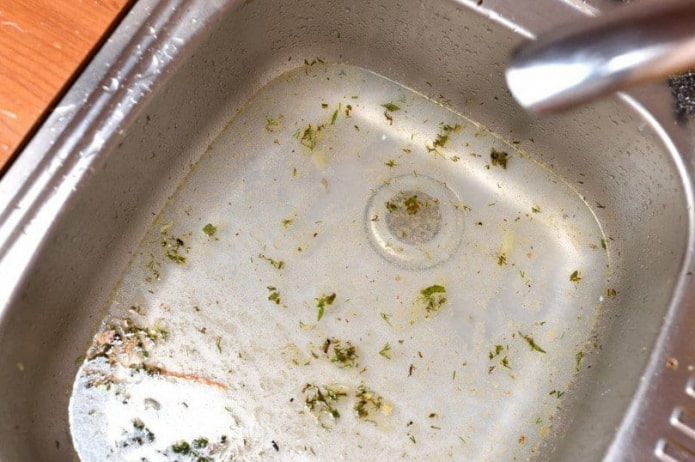
 10 practical tips for arranging a small kitchen in the country
10 practical tips for arranging a small kitchen in the country
 12 simple ideas for a small garden that will make it visually spacious
12 simple ideas for a small garden that will make it visually spacious
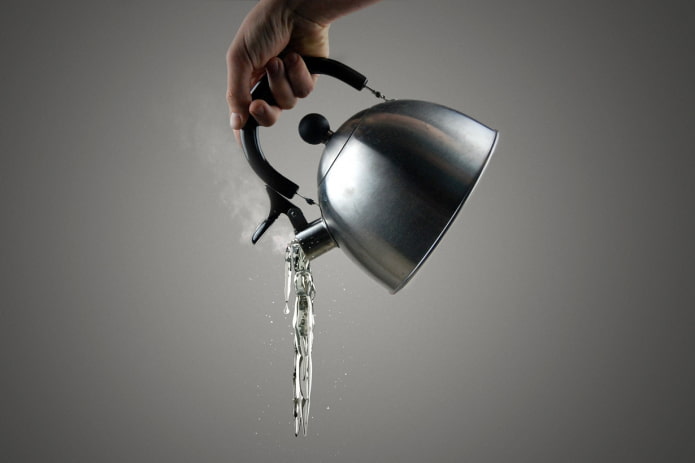

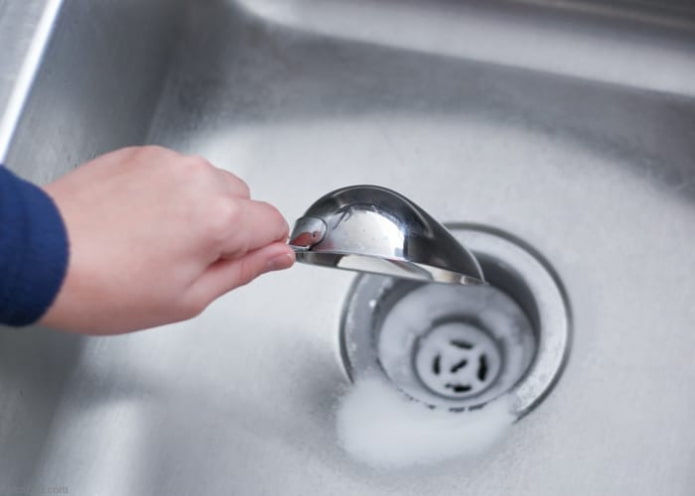
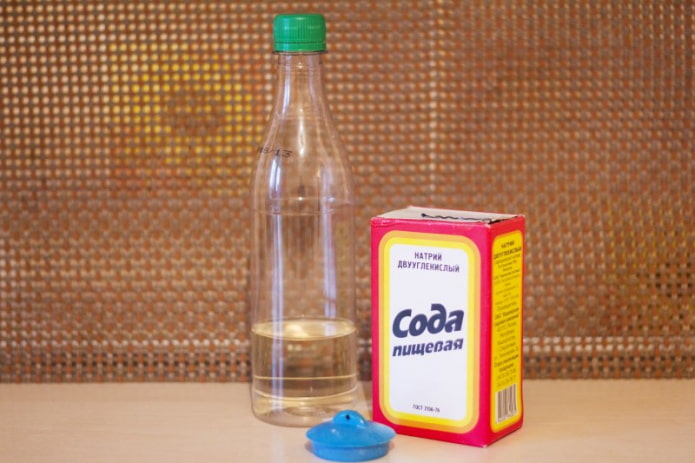

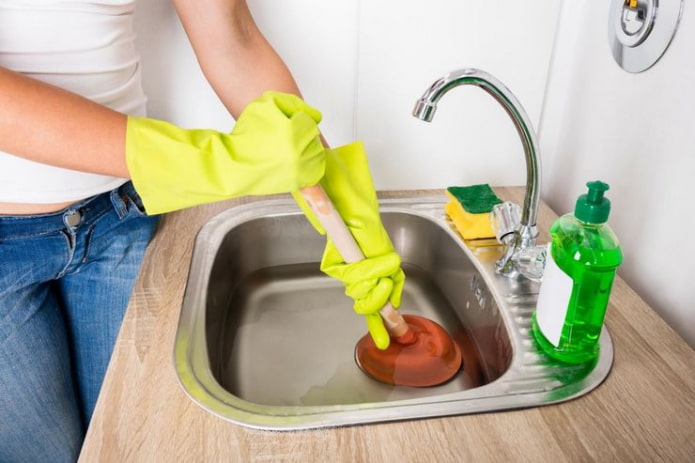
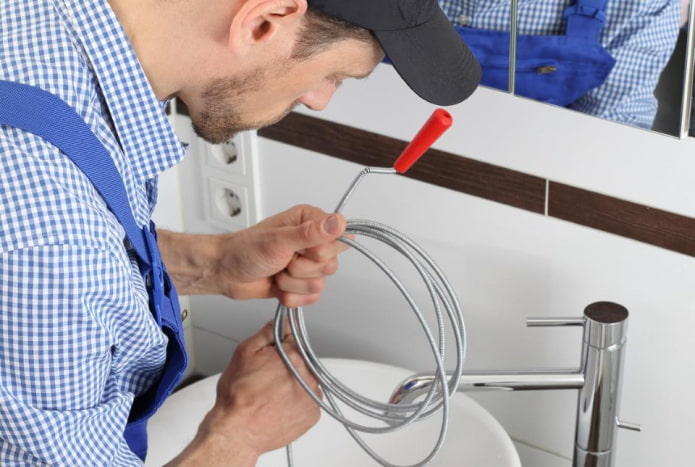
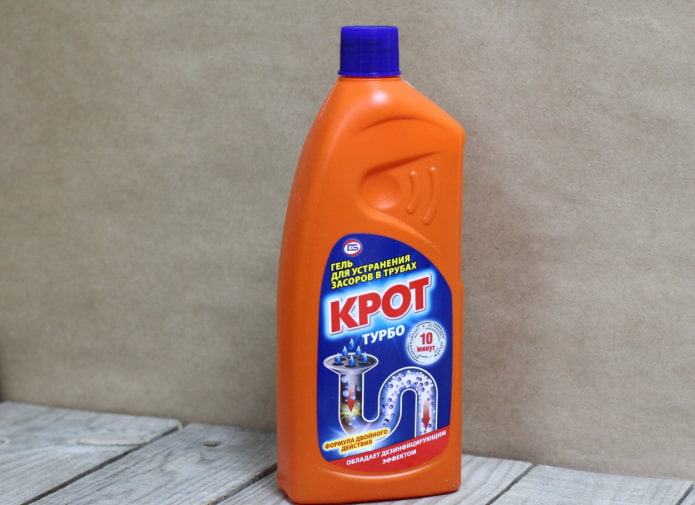
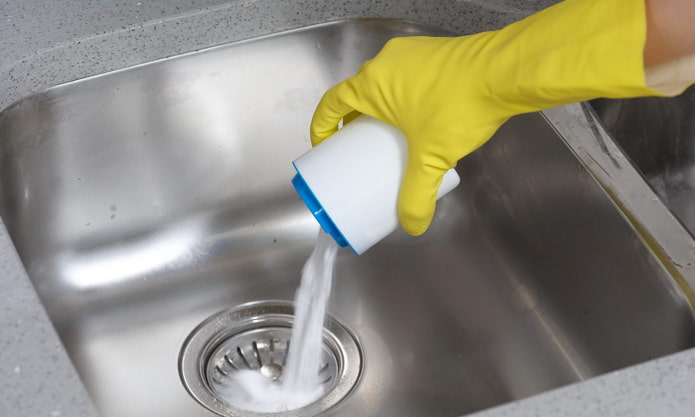
 How to choose the color of your kitchen sink?
How to choose the color of your kitchen sink? White kitchen set: features of choice, combination, 70 photos in the interior
White kitchen set: features of choice, combination, 70 photos in the interior Black set in the interior in the kitchen: design, choice of wallpaper, 90 photos
Black set in the interior in the kitchen: design, choice of wallpaper, 90 photos How to choose curtains for the kitchen and not regret it? - we understand all the nuances
How to choose curtains for the kitchen and not regret it? - we understand all the nuances Design of a white kitchen with a black countertop: 80 best ideas, photos in the interior
Design of a white kitchen with a black countertop: 80 best ideas, photos in the interior Kitchen design with green wallpaper: 55 modern photos in the interior
Kitchen design with green wallpaper: 55 modern photos in the interior